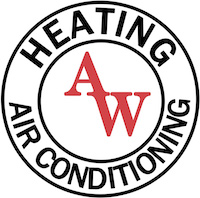A lot of homeowners only think they need air conditioning repair when their system totally fails. However, the reality is your air conditioner will often show signs of trouble before a complete breakdown that results in new AC installation. Understanding the warning signs and calling the experts at AW Heating & Air Conditioning to handle issues early can help you avoid the hassle and expense of a full AC system failure. More importantly, it can prevent the uncomfortable feeling of having your AC break down when it’s scorching hot outside.
When you call us, our team of certified HVAC technicians will identify the problem, resolve the issue and get your system running again. We have a proven track record in the community and provide high-quality, cost-effective AC service for local homeowners.
Why put off calling the pros until your cooling system quits? Skip all that hassle by calling today to schedule AC repair in Lincoln, NE, from AW Heating & Air Conditioning.

Warnings Signs You Need AC Repair
How can you tell if your air conditioner requires service? From strange odors to no cold air coming from the vents, there are many clues that your cooling system has a problem and needs attention or service.
Here are some red flags that trouble may be around the corner and it’s time to call an HVAC technician from AW Heating & Air Conditioning:

AC is blowing hot air
If heated air is coming from your AC unit instead of cool air, or if the air isn’t as cold as you’d like, it’s a good idea to call us for professional cooling service.
Air conditioner keeps turning on and off
If your AC system starts and stops instead of completing its normal cycle, it could be a warning of potential issues and should be evaluated by one of our certified HVAC technicians.


Home energy bills spike for no apparent reason
A big jump in your energy costs can be a sign your AC unit is losing efficiency, which means it uses more energy to keep your space comfortable and needs AC maintenance or repair.
Strange smells are coming from your air conditioner
Air conditioners shouldn’t produce odors. Unusual odors coming from your air conditioning system should be inspected by an HVAC technician, as they can be a sign of problems like mold, mildew or even electrical issues.


AC makes loud noises when it runs
If you hear strange sounds when your air conditioner is running — thumping, scraping or screeching, to name just a few — it’s important to call for professional HVAC service to find out what’s wrong.
Request Pro Air Conditioner Repair Right Away
When you require air conditioning service quickly, get in touch with the HVAC repair professionals at AW Heating & Air Conditioning. We’ll quickly diagnose the issue when your air conditioner won’t work or give sufficient cool air.


